In the frigid landscapes where most reptiles dare not venture, one remarkable snake has evolved an extraordinary adaptation that defies our typical understanding of cold-blooded creatures. The European adder (Vipera berus) stands alone as the only snake species capable of giving live birth in snowy, frigid environments, pushing the boundaries of reptilian biology to thrive where others cannot survive. This remarkable creature has developed a reproductive strategy that allows it to colonize some of the planet’s most inhospitable regions, venturing further north than any other snake species and surviving in environments where temperatures plummet below freezing for months at a time. What makes this possible, and how does this extraordinary snake manage to reproduce in conditions that would be lethal to most of its relatives?
The European Adder: An Overview of the Cold-Weather Champion
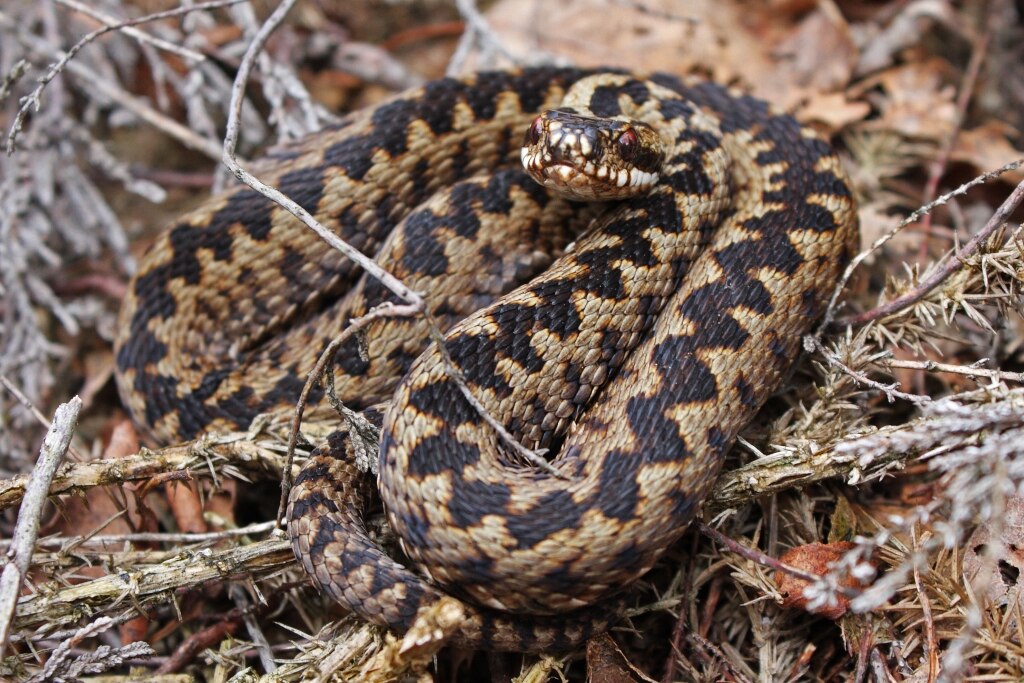
The European adder, scientifically known as Vipera berus, holds the distinction of being the most widely distributed terrestrial snake species in the world. This remarkable viper can be found across much of Europe and Asia, ranging from the United Kingdom all the way to the Pacific coast of Russia, and from the Mediterranean to beyond the Arctic Circle in Scandinavia. Relatively small in stature compared to many snake species, adults typically measure between 60-90 centimeters (24-35 inches) in length, with females generally growing larger than males. Their most distinctive feature is the dark zigzag pattern that runs along their back against a contrasting background that can range from gray to brown, reddish, or even a silvery hue, providing excellent camouflage in their varied habitats. Despite being venomous, European adders are typically shy and non-aggressive, preferring to retreat rather than confront potential threats when given the opportunity.
The Geographical Extremes: How Far North Do European Adders Venture?
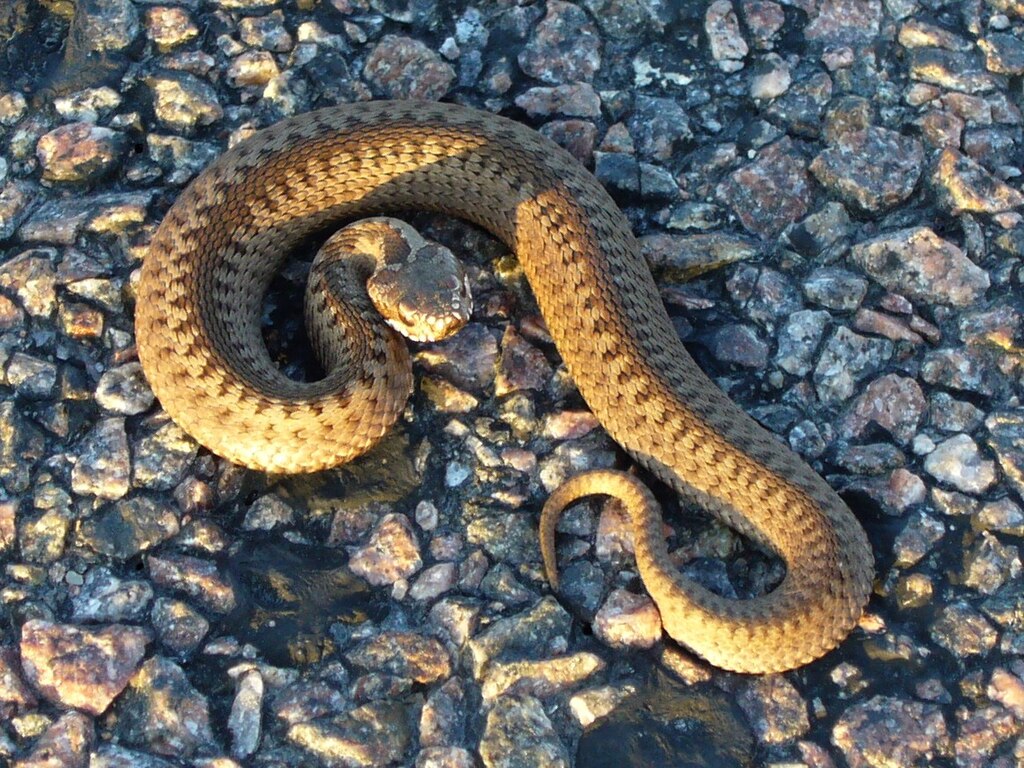
The European adder has pushed the boundaries of snake habitation further north than any other serpent species on the planet. These remarkable reptiles can be found well above the Arctic Circle, surviving in places like northern Sweden, Finland, and even parts of Norway where winter conditions are brutally harsh. In fact, populations have been documented at latitudes as high as 69° north in Scandinavia, where winter temperatures regularly plummet far below freezing and daylight becomes scarce during the long winter months. For perspective, this latitude is comparable to northern Alaska, illustrating just how extreme these habitats truly are for a reptile. This extraordinary geographical range is particularly impressive considering that reptiles typically rely on external heat sources to regulate their body temperature, making the adder’s ability to survive in such cold environments all the more remarkable. Their exceptional cold tolerance and specialized reproductive strategies have allowed them to colonize habitats that remain completely inaccessible to virtually all other snake species.
Viviparity: The Evolutionary Advantage in Cold Climates
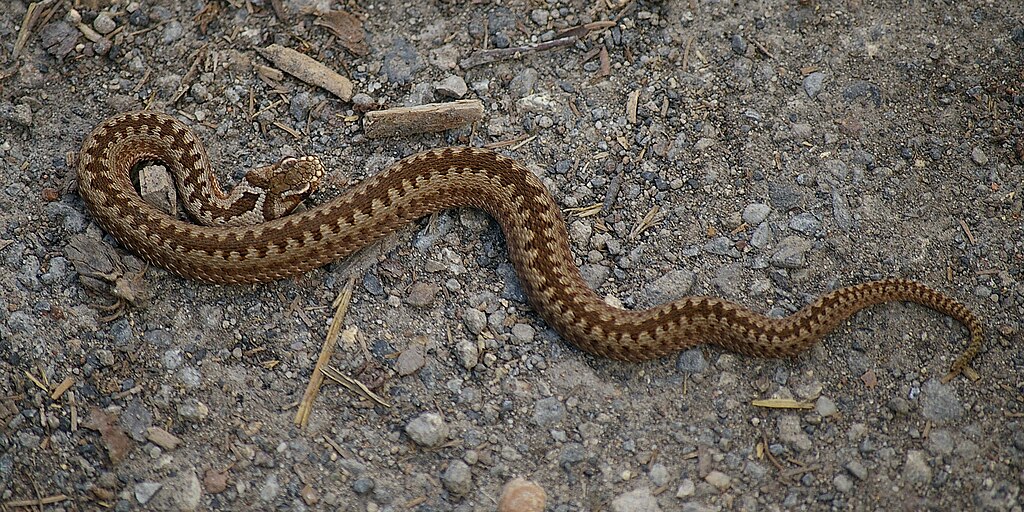
The key to the European adder’s success in frigid environments lies in its reproductive strategy known as viviparity – giving birth to fully-formed young rather than laying eggs. Unlike most snake species which are oviparous (egg-laying), the female adder retains her developing embryos within her body throughout gestation, providing them with critical warmth and protection from the harsh external environment. This adaptation represents a profound evolutionary response to the challenges posed by cold climates, where eggs laid in the ground would likely perish due to insufficient heat for proper development. The internal development allows the mother to actively thermoregulate by basking in the sun to raise her body temperature, directly transferring that vital heat to her developing offspring. Furthermore, viviparity enables the female to select specific microhabitats with optimal thermal conditions throughout pregnancy, maximizing the developmental health of her young. This reproductive strategy essentially creates a “mobile incubator” that gives the species a significant survival advantage in environments where the breeding season is extremely short and ground temperatures are often too low for egg incubation.
Thermal Regulation: How Mother Adders Keep Their Young Warm
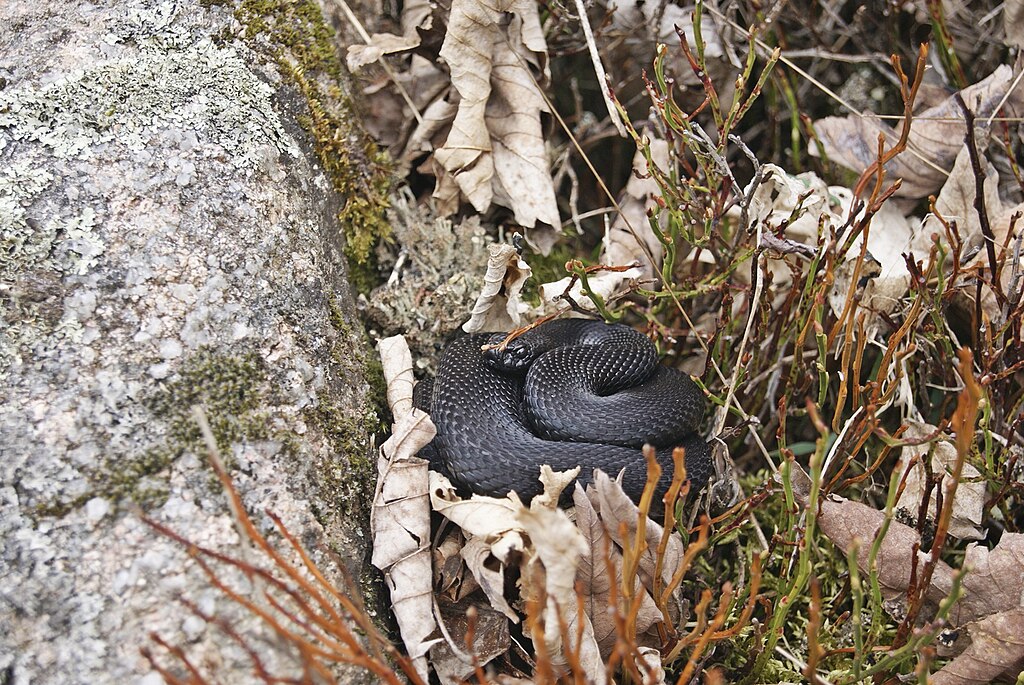
Female European adders demonstrate remarkable behavioral adaptations to maintain optimal body temperatures during pregnancy, a critical factor for the healthy development of their young. Pregnant females significantly alter their basking habits, spending substantially more time absorbing solar radiation than non-pregnant females or males, sometimes dedicating up to 70% of their daily activity to this vital warming process. They carefully select specific basking locations that provide maximum sun exposure while offering quick retreat options to avoid predators, creating a delicate balance between thermal needs and safety. Interestingly, these gravid females also develop darker pigmentation during pregnancy, enhancing their ability to absorb heat more efficiently during the limited sunny periods available in northern regions. Research has shown that pregnant female adders maintain their preferred body temperature with remarkable precision when conditions allow, often keeping their internal temperature between 28-32°C (82-90°F) even when ambient temperatures are much lower, demonstrating the sophisticated thermal regulation strategies that make reproduction possible in these extreme environments.
The Hibernation Challenge: Surviving the Bitter Winters
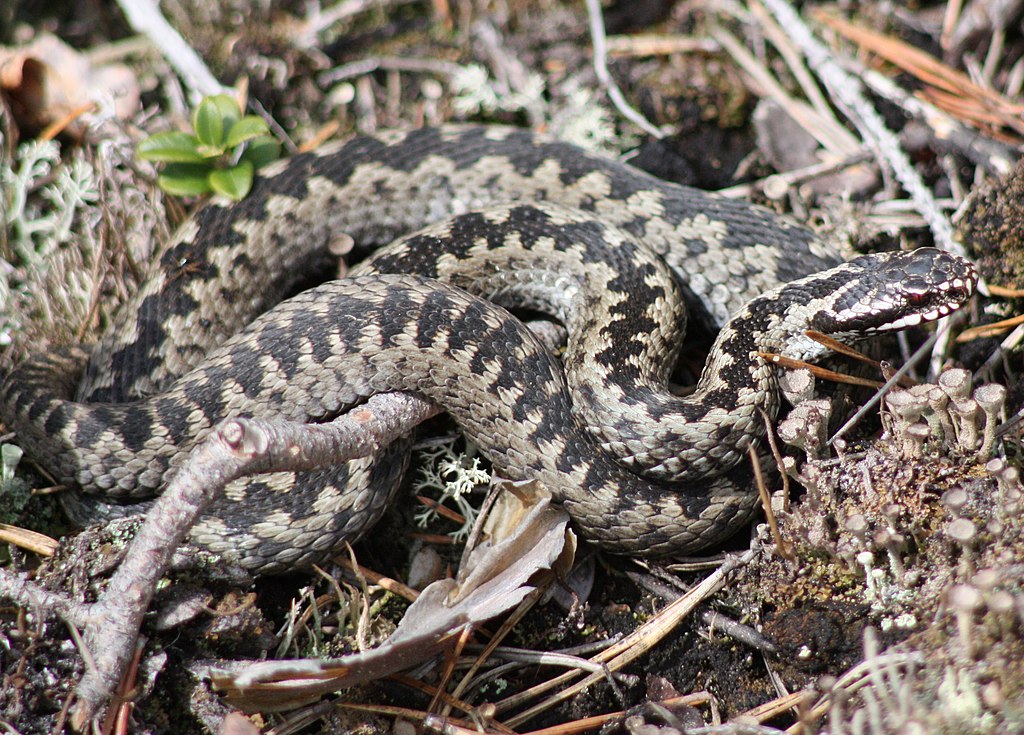
European adders face the monumental challenge of surviving months of freezing temperatures during winter, requiring specialized adaptations beyond their reproductive strategies. As autumn approaches and temperatures begin to drop, these snakes seek out hibernacula – protected underground chambers like rodent burrows, rock crevices, or hollow logs that provide insulation from the harshest conditions. Adders often hibernate communally, sometimes gathering in large numbers that can reach dozens or even hundreds of individuals in a single location, creating what’s known as an aggregation or “ball” of snakes. Before entering hibernation, they undergo physiological changes including slowing their metabolism dramatically and producing glycerol and glucose compounds that act as natural antifreeze in their blood and tissues. During hibernation, their heart rate drops significantly, sometimes to just a few beats per minute, and their oxygen consumption plummets to minimal levels as they enter a state of brumation (reptilian hibernation). This remarkable physiological shutdown allows them to survive for months without food while temperatures outside may drop to -40°C (-40°F) or below in the most extreme parts of their range.
The Brief Breeding Window: Racing Against Time
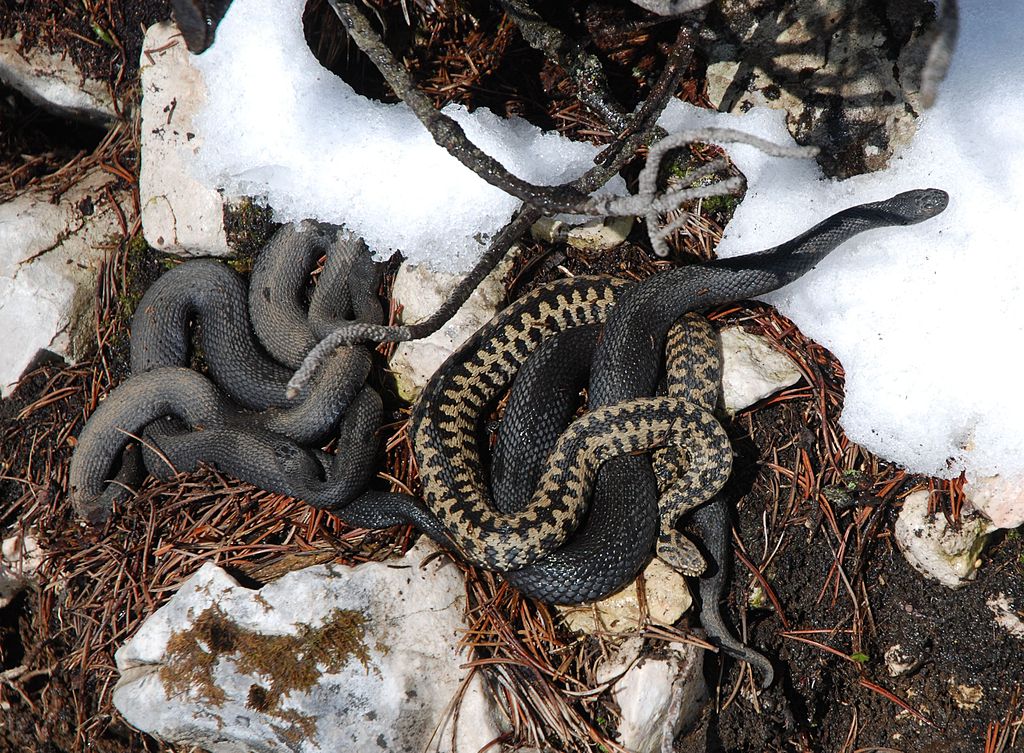
For European adders in northern regions, the reproductive timeline operates under intense pressure, with only a brief window available for the entire breeding cycle. Emerging from hibernation in spring, often while patches of snow still cover the ground, males typically appear first and undergo a period of “warming up” before females emerge. The mating season begins almost immediately, with males engaging in ritualized combat displays known as the “dance of the adders,” where they wrestle and attempt to pin each other down without using their venomous fangs. After successful mating, females have a remarkably compressed gestation period compared to their southern counterparts, typically lasting 3-4 months in the most northern populations versus up to 6 months in warmer regions. This accelerated development is made possible by the female’s intensive basking behavior, maximizing her exposure to precious sunlight during the brief summer months. The timing is critical, as offspring must be born with enough remaining warm weather to feed and grow before facing their first winter hibernation, creating an evolutionary pressure cooker that has refined the adder’s reproductive efficiency over countless generations.
Birth in the Snow: Witnessing a Remarkable Event
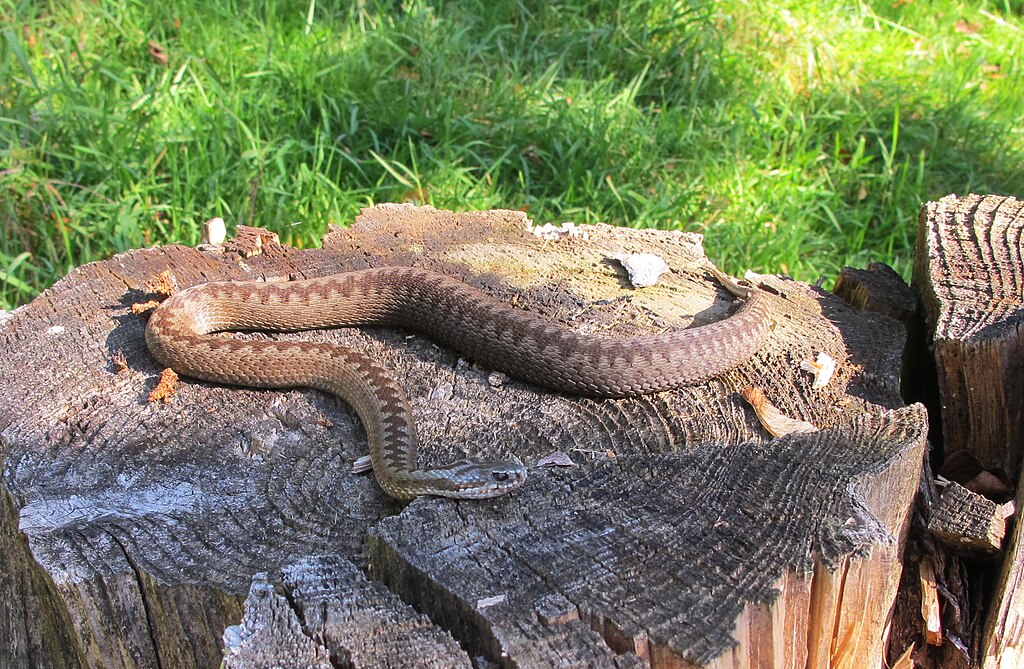
The birth of European adder young in northern habitats represents one of nature’s most remarkable events, sometimes occurring when snow has already begun to dust the landscape in early autumn. Unlike many viviparous species, adders don’t form a true placenta but instead produce a thin “shell” membrane that dissolves just before birth, allowing for a fascinating intermediate reproductive strategy sometimes called “ovoviviparity.” A female typically produces 5-15 young in a single litter, though this number varies depending on the mother’s size and local conditions. The birthing process itself is an exhausting affair that may last several hours as the female contracts to expel each baby snake, which emerges still enclosed in a transparent membrane that breaks open moments after birth. Most remarkably, in the highest latitude populations, these births sometimes occur with snow already on the ground in September or early October, with researchers documenting cases of female adders giving birth while partially covered by early snowfall. The newborns, perfectly formed miniature versions of their parents complete with functioning venom glands, measure approximately 15-20 centimeters (6-8 inches) and must immediately fend for themselves without parental care.
Ready from Birth: The Independence of Baby Adders
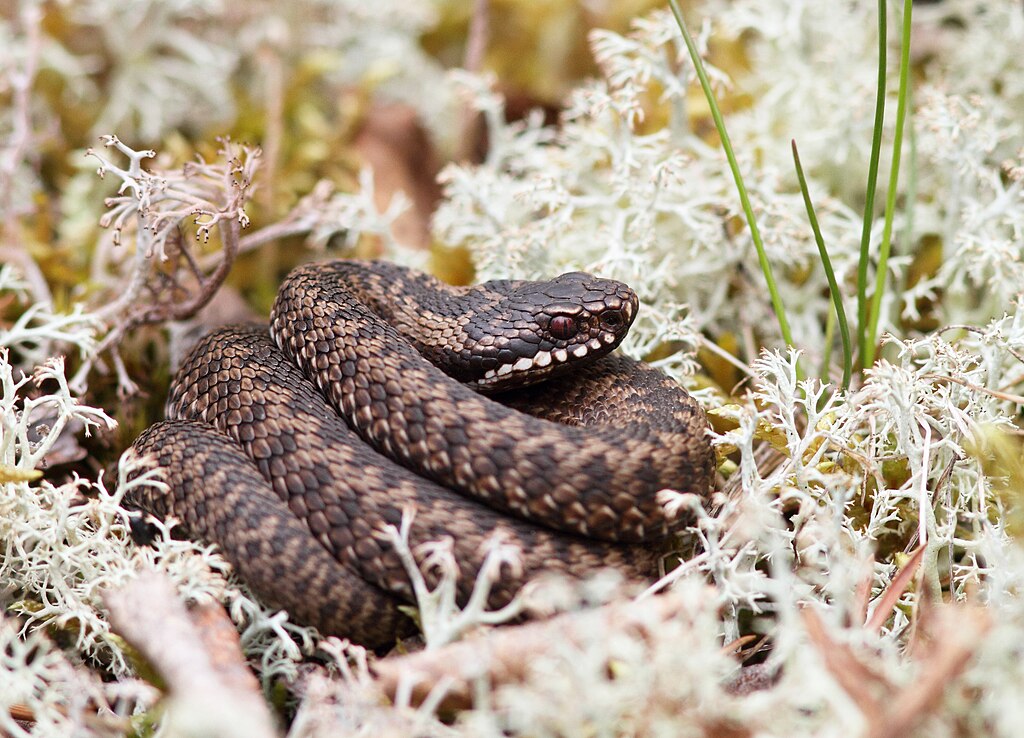
Unlike many animal species that require extended parental care, baby European adders enter the world as fully autonomous individuals, equipped with all the tools necessary for immediate survival in their harsh environment. These remarkable neonates possess functional venom glands from the moment of birth, though their venom is typically less potent than that of adults, providing them with the means to hunt prey and defend themselves from the start. Within hours of entering the world, these tiny predators are capable of capturing and consuming small prey like newborn mice, small lizards, or amphibians, fueling the critical growth they need before winter arrives. Their first shed typically occurs within a week of birth, marking an important developmental milestone as they literally outgrow their first skin. Perhaps most impressively, these newborns possess an innate ability to locate suitable hibernation sites, often following scent trails left by adult snakes to find established hibernacula where they’ll shelter for their first winter. This remarkable independence from birth is a necessary adaptation for a species reproducing in environments where the window for activity is extremely brief and parental resources are already depleted after the energetically demanding gestation period.
The Energetic Cost: Female Sacrifice for Reproduction
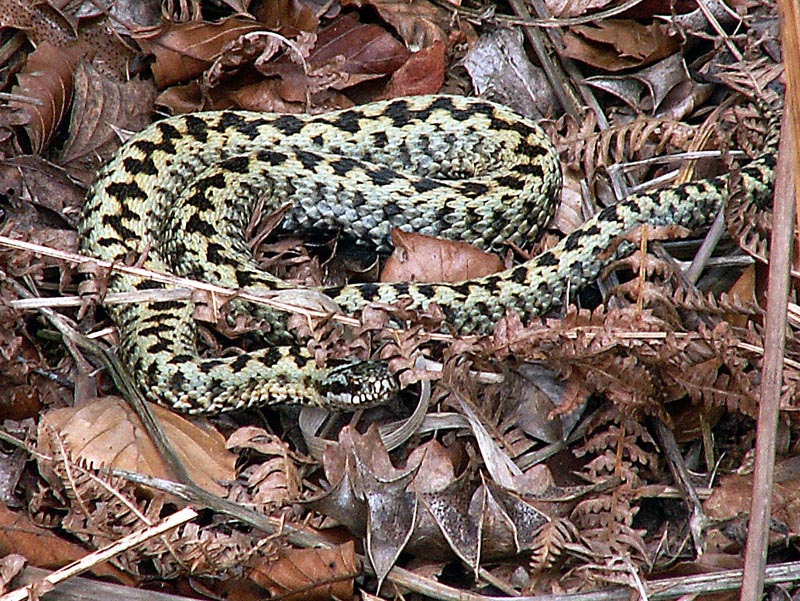
The reproductive strategy of the European adder comes with extraordinary energetic costs for females, representing one of the most physiologically demanding processes in the reptile world. During pregnancy, females essentially fast, rarely if ever feeding throughout the gestation period which can span several months, subsisting entirely on fat reserves accumulated before mating. This prolonged fast, combined with the substantial energy diverted to developing embryos, can result in the female losing up to 30% of her pre-pregnancy body mass by the time she gives birth. The extreme nature of this reproductive investment means that female adders in northern populations typically cannot reproduce annually, instead requiring at least one “recovery year” between pregnancies to rebuild sufficient fat reserves for successful gestation. Research has shown that this biennial or even triennial reproductive cycle becomes more pronounced at higher latitudes, where the energetic challenges are greatest and the feeding seasons shortest. This reproductive sacrifice represents an evolutionary trade-off that has allowed the species to push into habitats inhospitable to other reptiles, but it comes at the significant cost of reduced lifetime reproductive output compared to snakes in more temperate environments.
Comparative Advantage: Why Other Snakes Can’t Survive There
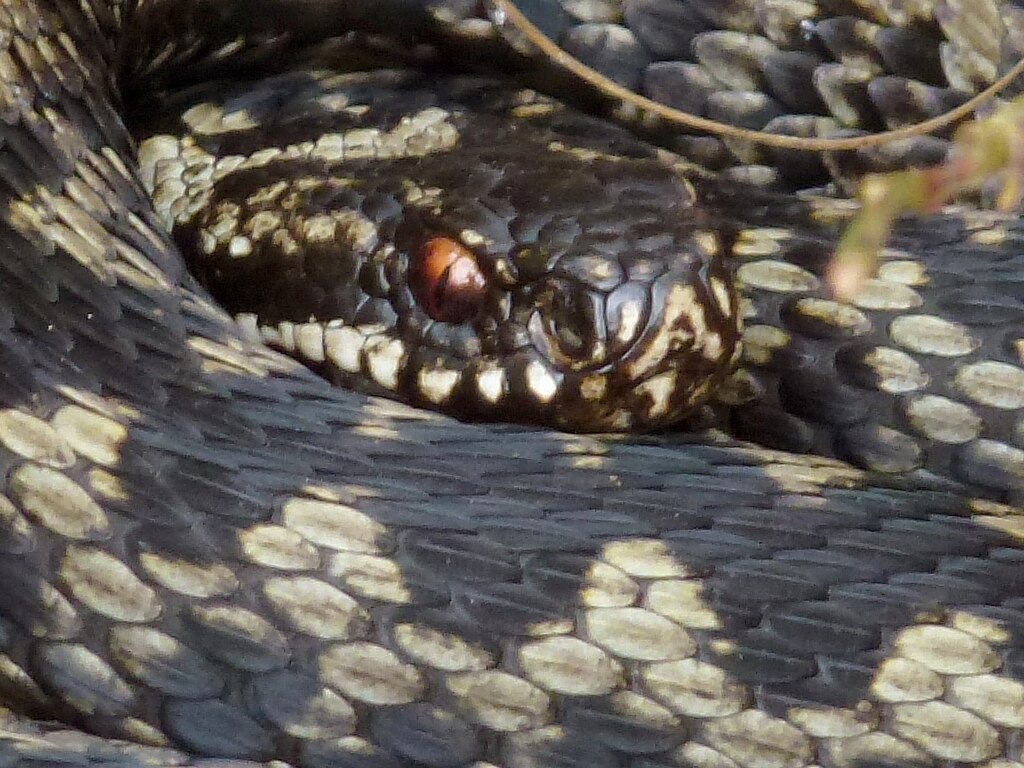
The European adder’s unique ability to thrive in snowy regions stems from a comprehensive suite of adaptations that other snake species simply do not possess in combination. While several other vipers and some colubrid snakes practice viviparity, they lack the adder’s exceptional cold tolerance and specialized hibernation capabilities that allow survival in sub-arctic conditions. Many snake species enter a state of torpor during cool periods but cannot endure the prolonged, deep freezing conditions that adders routinely survive. The adder’s specialized cardiovascular system, featuring enhanced blood flow regulation and efficient oxygen utilization at low temperatures, further distinguishes it from less cold-adapted serpents. Additionally, European adders possess specialized scales with improved insulation properties and more efficient internal mechanisms for heat retention compared to their relatives from warmer regions. Perhaps most significantly, the adder has evolved a remarkably compressed life cycle that can be completed within the extremely brief warm season available in northern latitudes, with accelerated growth rates and sexual maturation timelines compared to other viviparous snakes that require longer active seasons. This comprehensive package of cold-weather adaptations creates an ecological niche that remains inaccessible to virtually all other snake species.
Climate Change Impacts: New Challenges for a Cold-Weather Specialist
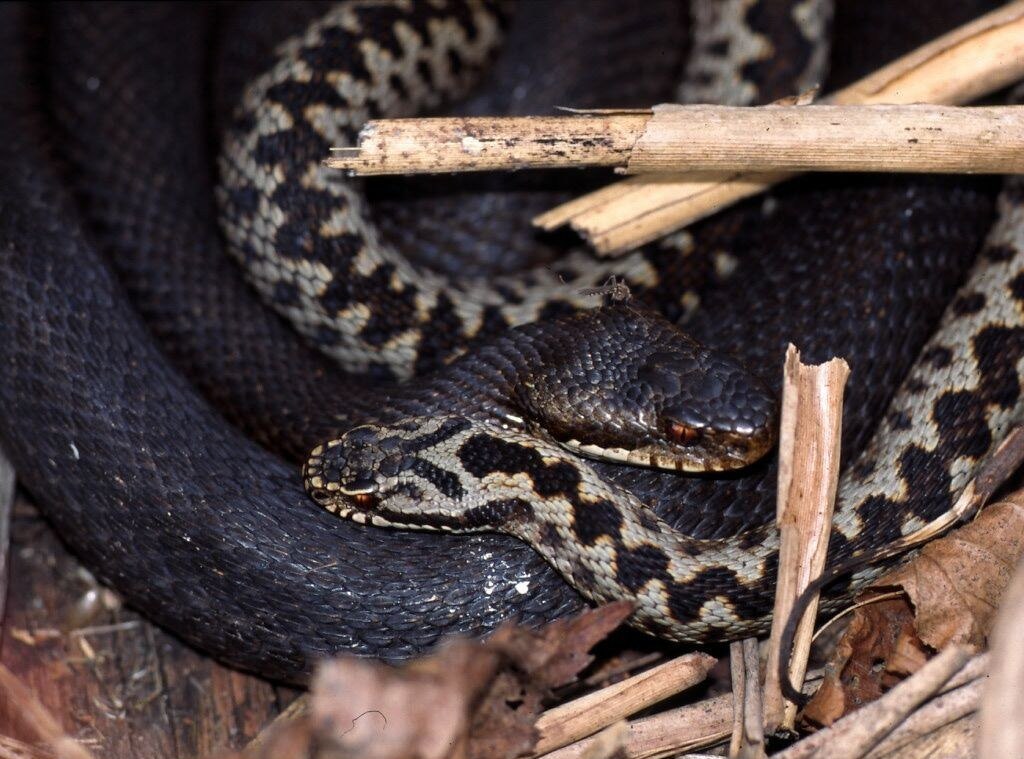
Despite their remarkable adaptations to cold environments, European adders face mounting challenges from rapid climate change that may disrupt their specialized life cycle. Rising temperatures and changing precipitation patterns are already altering the timing of hibernation periods, potentially creating mismatches between the snakes’ emergence and the availability of their prey species. Research suggests that warmer winters with fluctuating temperatures may be particularly problematic, as they can trigger premature emergence from hibernation followed by damaging cold snaps, or cause increased energy expenditure during what should be a period of minimal metabolism. For populations in the southernmost parts of their range, increasing summer temperatures may actually exceed the species’ thermal tolerance, potentially forcing range contractions at the warmer edges of their distribution. Perhaps most concerning is the potential disruption to their precise reproductive timing – females require very specific temperature patterns throughout gestation, and climate change may create conditions where successful reproduction becomes more difficult to achieve. Additionally, the increased prevalence of extreme weather events, including both droughts and flooding, poses direct threats to hibernation sites and may increase mortality rates in a species that has evolved for predictable, if harsh, seasonal patterns.
Conservation Status: Protecting a Cold-Climate Marvel
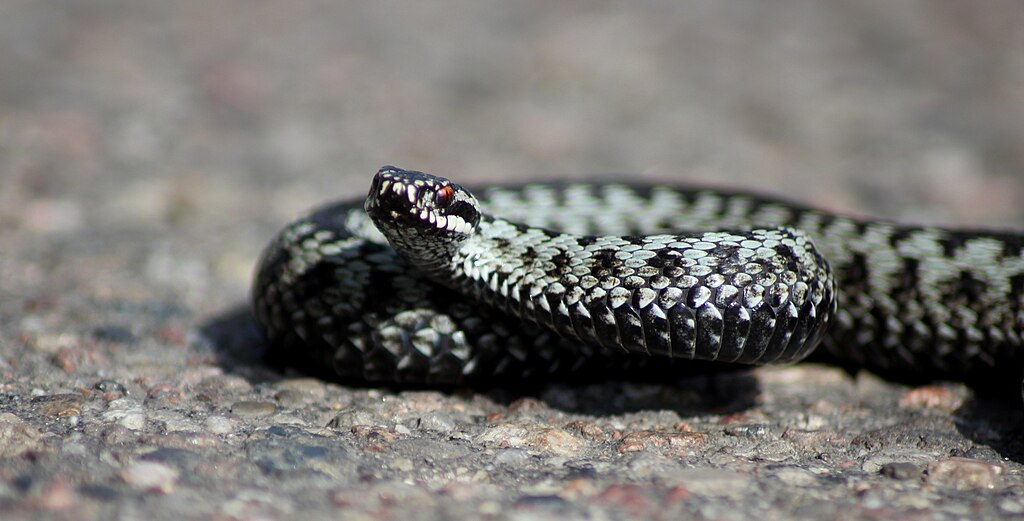
Despite their impressive adaptability, European adder populations face significant conservation challenges across much of their range, with several countries reporting concerning declines in recent decades. Habitat fragmentation represents perhaps the most serious threat, as development, agriculture, and forestry practices increasingly isolate populations and restrict the movement corridors essential for genetic exchange between communities. In the United Kingdom, for instance, some populations have declined by more than 70% in recent decades, leading to its designation as a Priority Species under the UK Biodiversity Action Plan. Persecution remains another significant threat, as fear and misunderstanding still drive many people to kill adders despite legal protections in most countries within their range. Climate change poses perhaps the most complex challenge, potentially altering both habitat suitability and the delicate timing of the adder’s life cycle that has evolved over millennia. Conservation efforts increasingly focus on habitat connectivity, creating and maintaining corridors between isolated populations, public education to reduce persecution, and habitat management to ensure the availability of crucial microhabitats for basking, hunting, and hibernation. The European adder’s future may depend on our willingness to protect not just the species itself, but the entire cold-climate ecosystems they inhabit and the remarkable adaptations they represent.
Conclusion
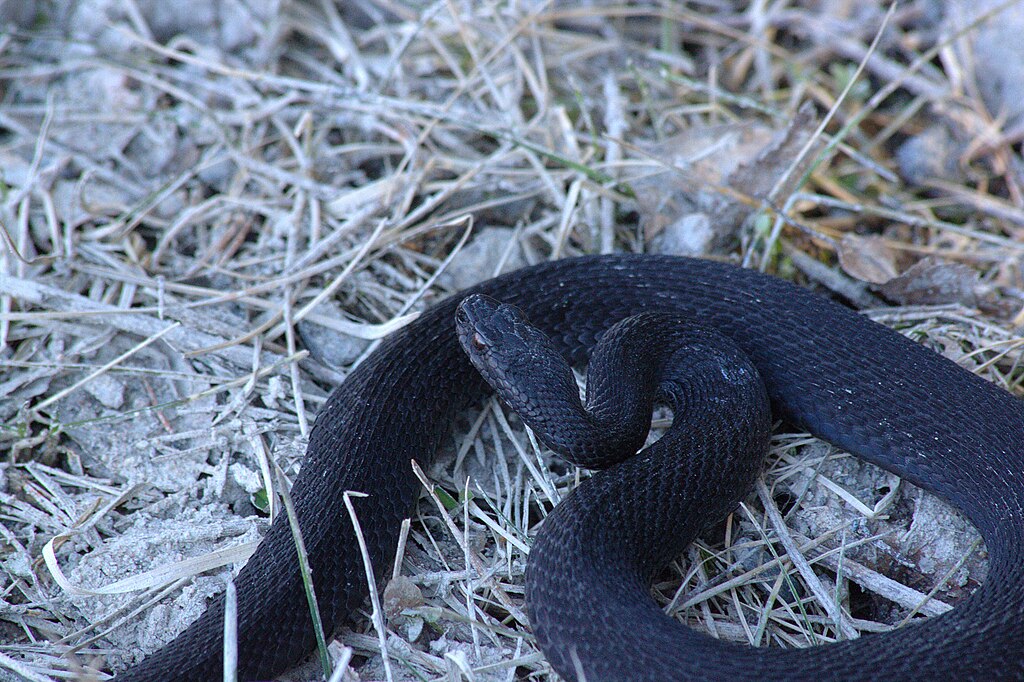
The European adder stands as a remarkable example of evolutionary adaptation, pushing the boundaries of what’s possible for cold-blooded creatures in some of Earth’s most challenging environments. Through its specialized reproductive strategy of live birth, sophisticated thermoregulatory behaviors, and remarkable physiological adaptations for surviving brutal winters, this snake has carved out a unique ecological niche that remains inaccessible to other serpent species. As the only snake capable of reproducing in snowy regions, the European adder represents a biological marvel worthy of both scientific admiration and conservation attention. In a world of increasing environmental challenges, the continued survival of this cold-weather specialist serves as both inspiration and warning – a testament to the remarkable adaptability of life, but also a reminder of the delicate balance that allows such specialized creatures to persist in extreme environments.





